Repair help
How do I fix a leaking washing machine?
AZparts Team
Updated on July 18, 2025
7 min read
There’s a certain satisfaction that comes with a smooth laundry routine. But when you suddenly notice water pooling under your washer, the first question that comes to mind is how do I fix a leaking washing machine. While some issues may be simple enough to handle on your own, others need a closer look. In this article, AZParts will guide you through the common causes and offer the trusted parts you need to bring your appliance back to life without delay.

1. How to fix a leaking washer?
1.1 Tighten or replace the hose clamp
Loose or corroded hose clamps are one of the most common reasons a washer leaks. Start by unplugging the washer and carefully inspecting the water inlet hoses (at the back of the machine) and the drain hose (usually located at the bottom rear or side).
- Check for dampness or water drips around the hose connections.
- Use a flat-head screwdriver to gently tighten any loose clamps.
- If the clamp is rusty, bent, or no longer grips securely, replace it with a new one of the same size.
- Be sure to reconnect the hoses securely and test for leaks before using the machine again.
1.2 Clean the drain filter
A clogged drain filter can block water flow and cause leaks or slow drainage. Most front-load washers have a drain filter located behind a small panel at the bottom front of the machine.
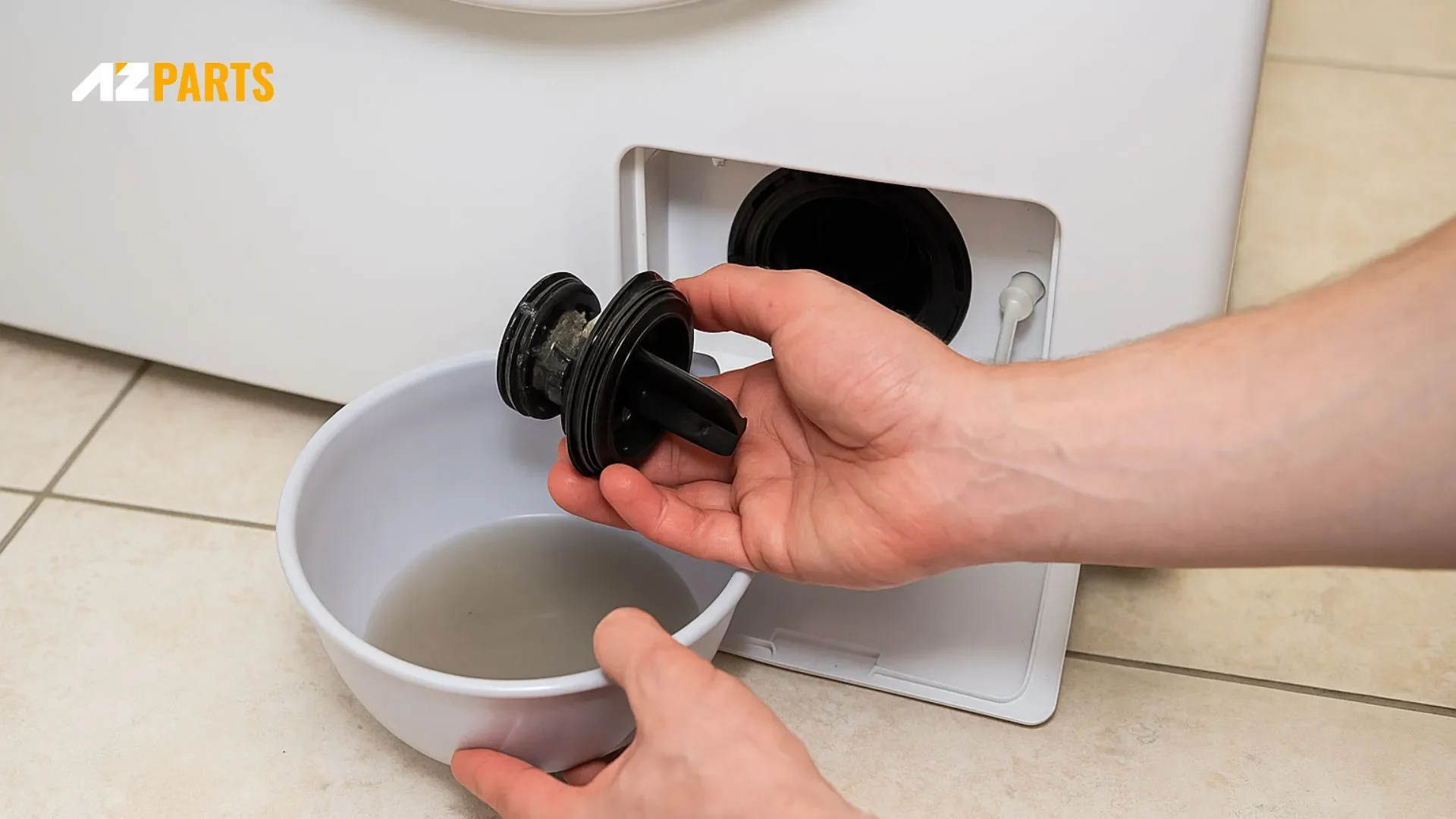
To clean it safely:
- Turn off the washer and unplug it from the power source.
- Place a shallow tray and towel under the panel to catch any water.
- Open the panel and slowly unscrew the filter cap to allow water to drain.
- Remove any trapped debris such as lint, coins, or fabric scraps.
- Rinse the filter under running water and screw it back tightly before closing the panel.
- Regular cleaning (about once a month) helps prevent leaks and ensures smooth operation.
If you notice cracks on the filter, worn-out seals, or water continues to leak even after cleaning, the washer pump filter may be damaged and need replacement. A faulty pump filter can allow water to escape during the drain cycle and should be replaced with a compatible part for your washer model.
1.3 Replace the tub seal
If your washing machine leaks mainly during the rinse or spin cycle, the tub seal may be worn or damaged. This rubber seal prevents water from escaping around the shaft where the drum spins.
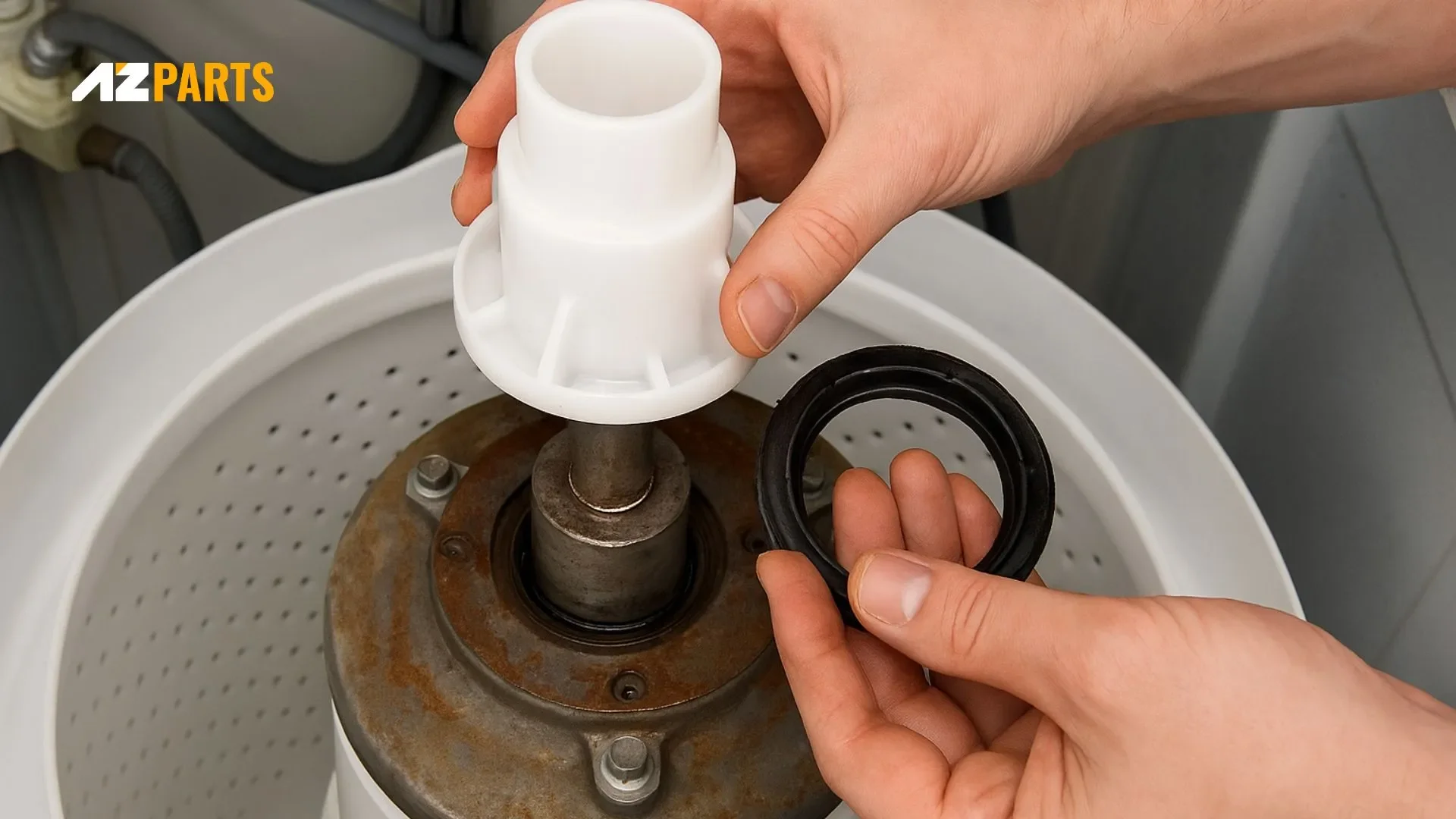
Signs to look for:
- Water leaking from underneath the washer
- Leaks occur only during spinning
- Rust or moisture near the bottom center
What to do:
Replacing the tub seal requires accessing the internal components of the washer, which may involve removing the drum and tilting the machine. If you're not experienced with appliance repair, it’s best to contact a technician.
Replacing the tub seal requires accessing the internal components of the washer, which may involve removing the drum and tilting the machine. If you're not experienced with appliance repair, it’s best to contact a technician.
In many cases, the issue can only be resolved by replacing washer seal parts with new, compatible ones. Be sure to choose a seal that matches your washer model to ensure a proper fit and long-term performance.
1.4 Replace the coupler
If your washer fills with water but doesn’t spin or agitate, and clothes remain soaking wet, the coupler may be broken.
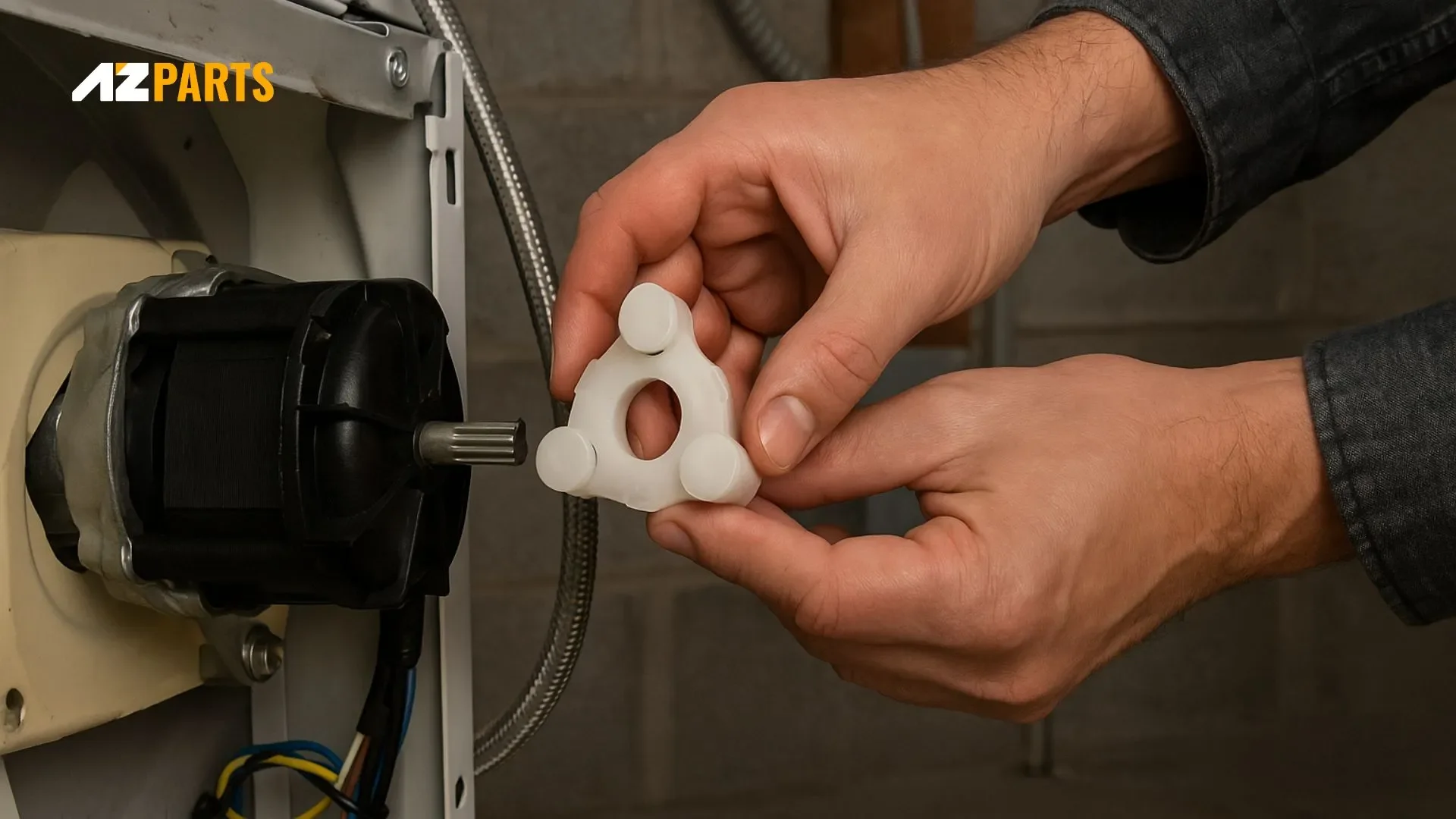
What is the coupler?
The coupler connects the motor to the drum or agitator. In many top-load washers, this part is called the washer agitator coupler.
Signs of a damaged coupler:
- The drum doesn’t spin or move
- The motor runs, but nothing happens
- Water leaks slightly from underneath
What to do:
The coupler is intentionally designed to break under stress to protect more expensive components. If it’s worn out or broken, replace it with a washer agitator coupler that matches your machine’s model. Installing a compatible new part is a simple way to restore your washer’s function without needing a full repair service.
1.5 Replace the water pump
A faulty water pump is one of the most common reasons for leaks under a washing machine. If you notice water pooling beneath the washer, it’s worth checking the pump area for signs of dampness. This is usually located at the bottom of the machine.
In some cases, the leak might not come directly from the pump itself, but from a loose hose clamp or a damaged drain hose connected to it. Inspect the area around the pump and make sure all hoses are securely attached and not cracked or worn.
If the pump housing is cracked, the impeller is jammed, or water continues to leak even after tightening the hose connections, the pump may need to be replaced. While this is a manageable repair for some, you may want to contact an appliance technician if you're unsure how to proceed.
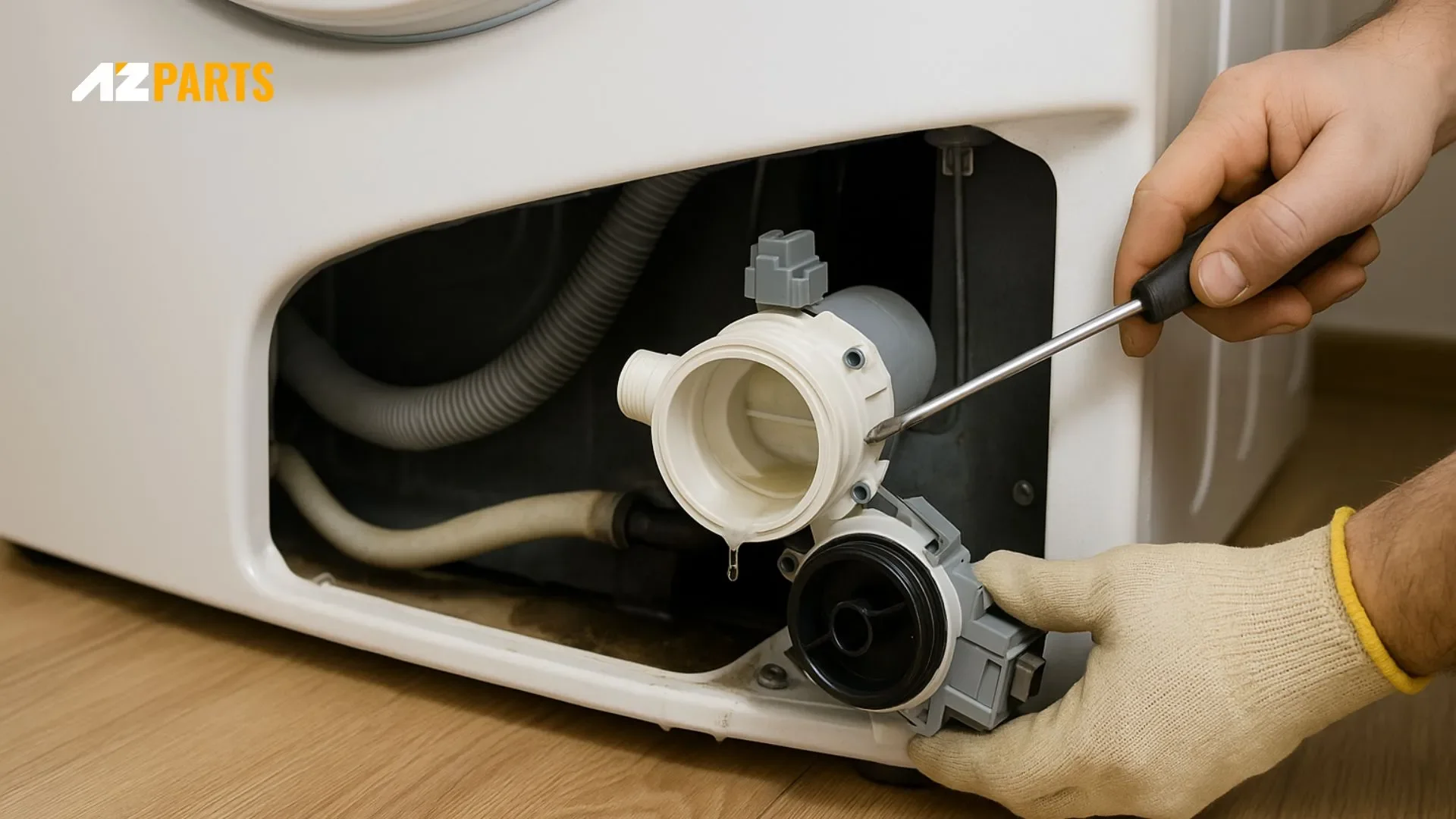
1.6 Make sure your washer is leveled properly
If your washing machine isn’t level, it can vibrate excessively during the wash or spin cycle. Over time, this movement may cause water to leak onto the floor, especially if hoses or internal parts shift out of place.
To check the balance, place a level tool on top of the washer. If it’s uneven, adjust the leveling feet underneath by turning them until the machine sits flat and stable. For older models without adjustable feet, using anti-vibration pads can help reduce shaking and keep the washer in place.
Keeping your washer properly leveled not only prevents leaks but also protects the internal components from unnecessary wear.
2. Why is my front-load washing machine leaking from the bottom?
A leak at the bottom of a front-load washing machine can be caused by several common issues:
- Drain pump problems: Cracks, clogs, or loose connections in the pump can lead to leaks during or after draining.
- Worn tub seal: If the seal around the drum shaft is damaged, water can escape during high-speed spin cycles.
- Clogged or dirty drain filter: Blockages in the filter may cause water to back up and leak out from the bottom.
- Loose or damaged hoses: Hoses that connect to the pump or drum can wear out or come loose over time.
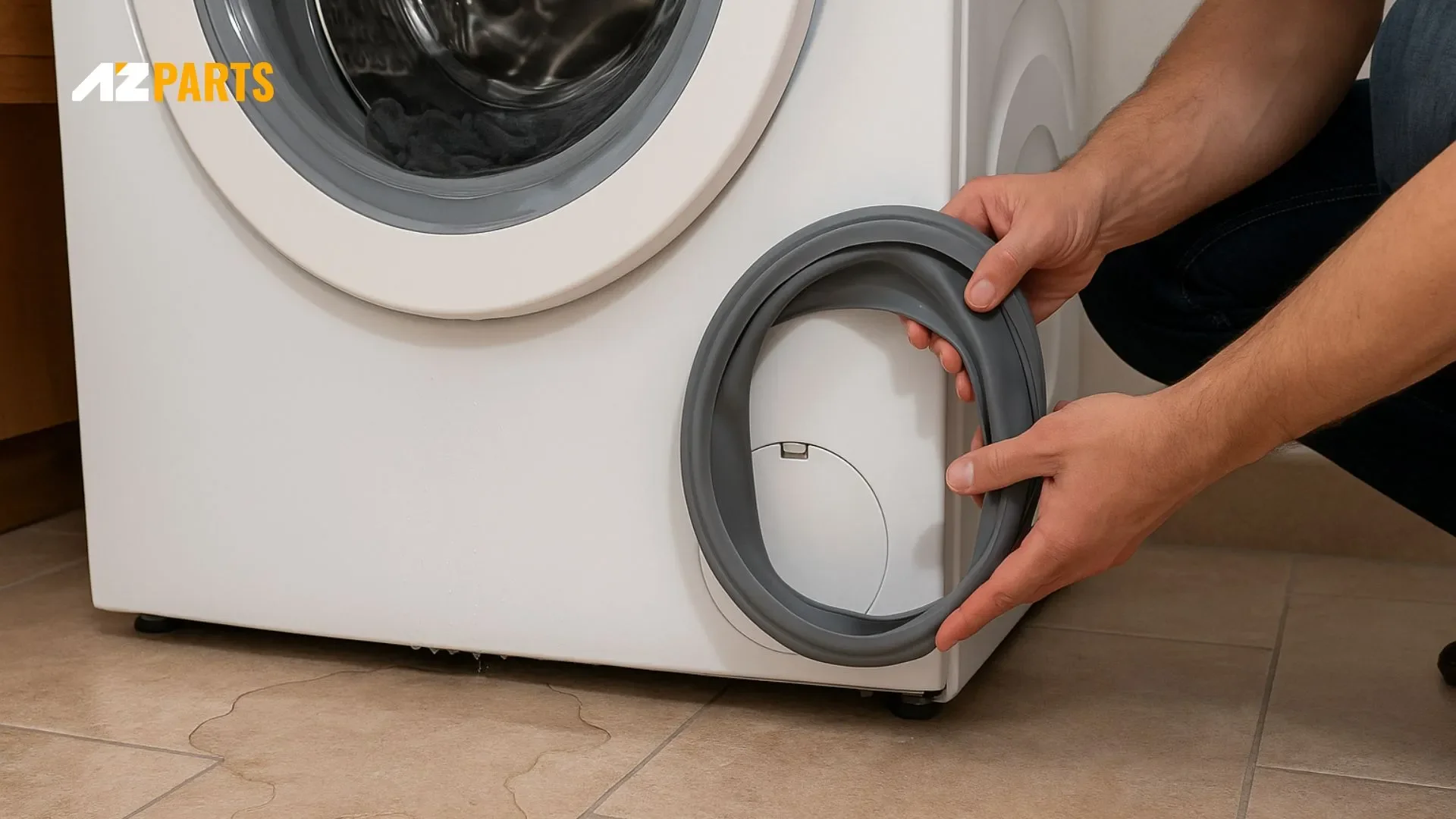
In addition to those issues, front-load washers are especially prone to leaks if not properly leveled. When unbalanced, the machine can shake during operation, causing water to spill out through the door seal. This may appear as a bottom leak, even if the actual source is the door.
To fix the issue, check the machine for levelness, inspect the door gasket and filter, and look under the unit for damp areas. Identifying the exact source will help you determine whether a cleaning, adjustment, or part replacement is needed.
3. Can overfilling a washing machine cause it to leak?
Yes, overloading your washer can lead to leaks. Too many clothes, especially bulky items, can throw off the balance, putting stress on the drum and seals. Water may escape from the door, tub, or detergent drawer. To check, run a cycle with no laundry. If the leak stops, loading too much is likely the problem.
4. Can a clogged filter cause leaking?
Yes, a clogged filter can cause water to back up and leak from the bottom of the washer. When dirt, lint, or small objects block the drain filter, water may not flow out properly during the cycle. This can lead to puddles around the machine. Cleaning the filter regularly helps prevent this issue and keeps the washer draining smoothly.
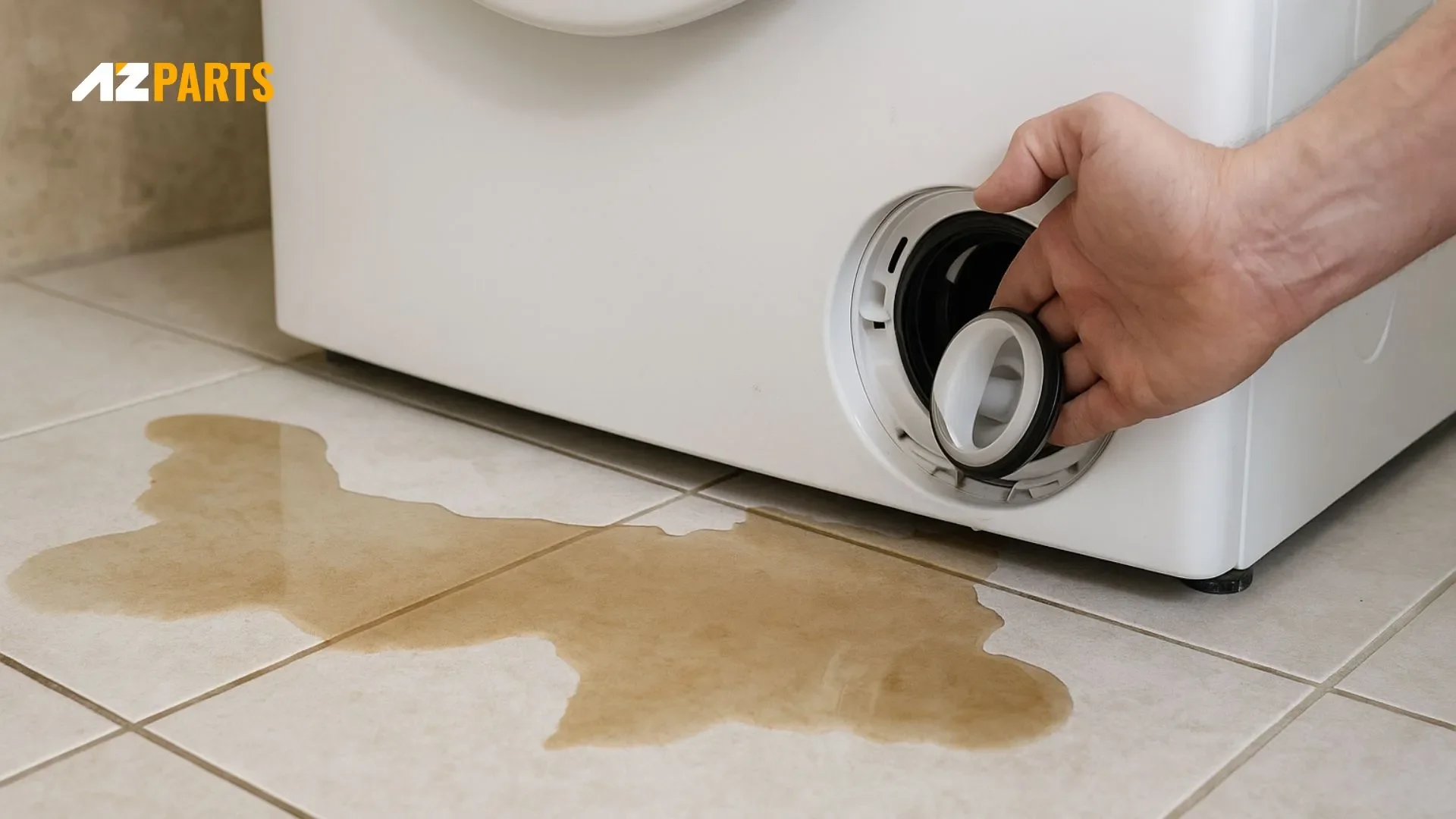
Fixing a leaking washing machine starts with identifying the source, whether it’s a loose hose clamp, clogged filter, worn tub seal, or broken coupler. With the right approach and replacement parts, most leaks can be handled quickly and effectively.
For those searching for how to fix a leaking washing machine, AZParts provides a wide selection of washer parts, including pump filters, seals, couplers, and more model-specific, high-quality, and easy-to-install parts. Timely repairs with trusted parts not only stop the leak but also extend the life of your appliance.
Contact Information:
8 The Green, Ste A, Dover, Delaware 19901-3618, United States
Learn more about common washer problems:
Washer
Further Reading
Further Reading





_1748341252.jpg&w=3840&q=75)